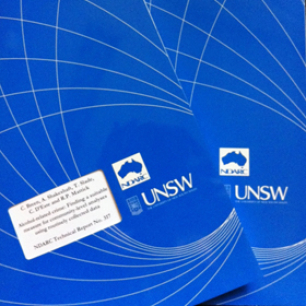NDARC Technical Report No. 84 (2000)
EXECUTIVE SUMMARY
In 1998, the National Drug and Alcohol Research Centre was commissioned by the Commonwealth Department of Health and Family Services to begin a national trial of the Illicit Drug Reporting System (IDRS), following previous employment of the methodology in New South Wales, South Australia and Victoria. The intention of the IDRS was to provide a co-ordinated approach to the monitoring of data associated with the use of opioids, cocaine, amphetamines and cannabis, in order that this information could act as an early warning indicator of the availability and use of drugs in these categories.
The 1999 Tasmanian Drug Trends Report summarizes the information gathered in the Tasmanian component of the national IDRS using two methods: key informant interviews with professionals working in the drug field, and an examination of existing indicators.
Key informant study: Thirty-three key informants, including professionals recruited from health, law enforcement, research and outreach, were interviewed on a range of illicit drug use patterns in clients they had direct contact with. Of these informants, 17 reported on the use of opioids (diverted pharmaceuticals), 10 on cannabis and 5 on amphetamines.
Other indicators: In order to complement and validate the key informant interview data, a range of drug use indicator data was sought, including health and law enforcement data. Guidelines for the acceptability of these sources aimed to ensure national comparability, and required that the sources were available annually, included 50 or more cases, were collected in the main study site and included details on the main illicit drug types under study.
Included in this analysis were telephone advisory data, drug offence data, Hepatitis C incidence data, data from the 1998 National Drug Household Study, and data from clients of the needle and syringe exchange program, detoxification and methadone maintenance programs.
Summary of drug trends in Tasmania: The following trends in illicit drug use in the previous 6-12 months were identified by a majority of key informants and/or analysis of appropriate secondary indicator data:
Amphetamines
• increase in use of amphetamine
• increase in injection of amphetamine
• increased mental health concerns among users
• price and purity stable or decreased
• availability of amphetamine stable and easy
Opioids
• increased number of people using opioids
• decrease in age of users
• increase in female users
• broader demographic of users
• increased use of heroin among these users
• stable price and availability of opioids
Cannabis
• generally stable price ($20-25/gm), purity (medium/high) and availability (very easy)
• increase in mental health concerns among high level users
• most commonly used illicit drug
• increase in injection of other illicits among this group
Other Drugs
• increasing availability of heroin, although fluctuating and generally poor quality
• heroin use mainly among users of other opioids, dependant on quality
• increase in (recreational) use of ecstasy
• use/availability of cocaine is minimal
• injection of benzodiazepines common amongst opioid users
Other Issues
• increasing mental health concerns / issues amongst users
• increasing problems with self-care amongst users
• stable opioid fatality rates
• stable reports of Hepatitis C infection
• decreased sharing of needles by users
• decrease in pharmacy break-ins


